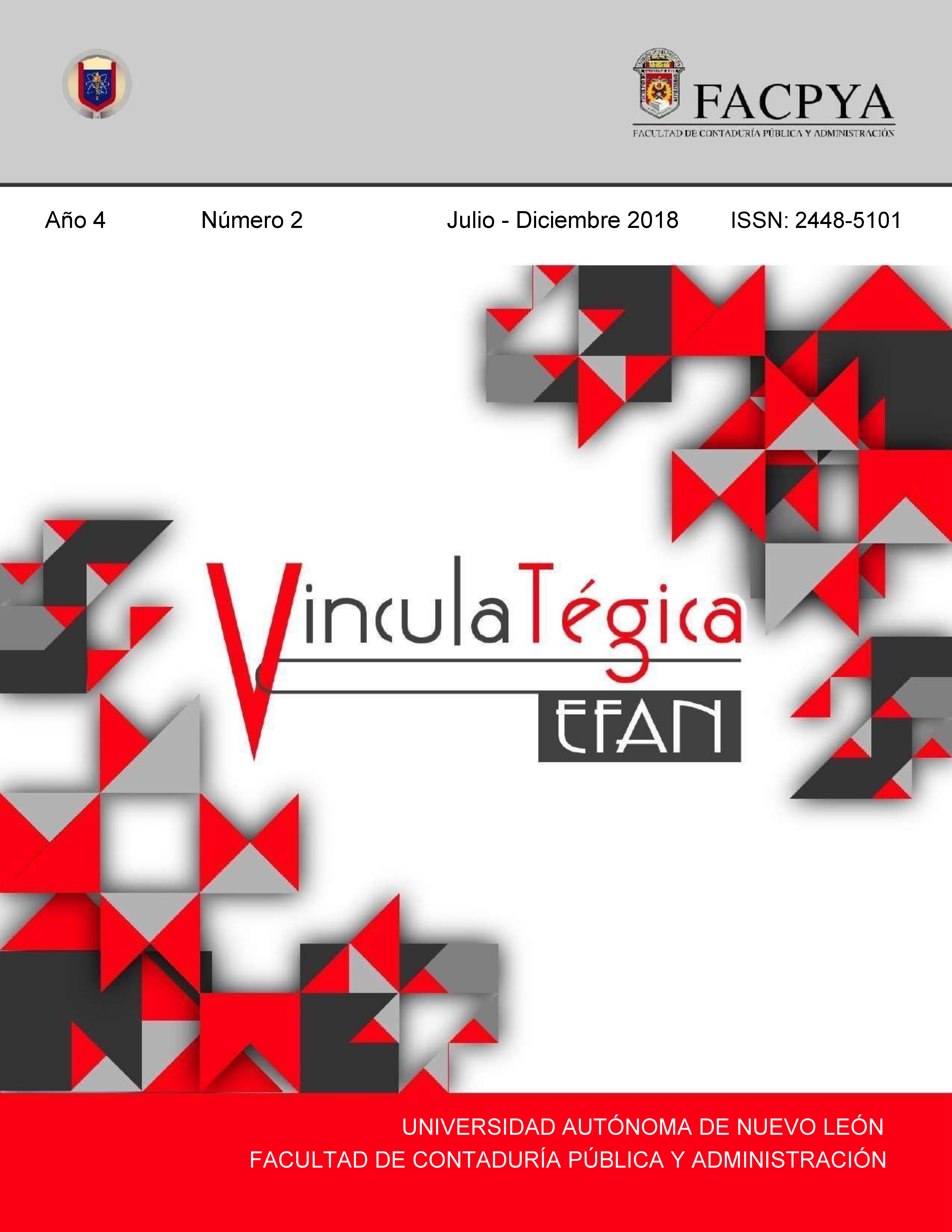Incidencia de la cultura organizacional en la implementación de procesos de innovación en las empresas
DOI:
https://doi.org/10.29105/vtga4.1-871Keywords:
cultura adhocrática, cultura jerárquica, innovaciónAbstract
Innovation currently represents a key to business success, for this reason it is essential that organizations know the way in which it can be increased, the literature points out that the organizational culture has important characteristics that can encourage innovation. The objective of this research is to analyze the effect that the organizational culture has on the development of innovation processes. A quantitative, non-experimental, transversal and correlational causal method was used. The sample was not probabilistic, a total of 101 questionnaires were collected, which were applied to the study subjects. The data were analyzed using the statistical technique Structural Modeling based on partial least squares [PLS]. The results reveal that both hierarchical and adhocratic culture have a significant impact on innovation.
Downloads
References
Ayala, P. (2014). Cultura Organizacional e Innovación. Revista Gestión de las Personas y Tecnología, 7(19), 12.
Büschgens, T., Bausch, A., & Balkin, D. B. (2013). Organizational culture and innovation: A meta-analytic review. Journal of Product Innovation Management, 30(4), 763-781. DOI: https://doi.org/10.1111/jpim.12021
Çakar, N. D., & Ertürk, A. (2010). Comparing innovation capability of small and medium-sized enterprises: examining the effects of organizational culture and empowerment. Journal of Small Business Management, 48(3), 325-359. DOI: https://doi.org/10.1111/j.1540-627X.2010.00297.x
Cameron, K. S., & Quinn, R. E. (2005). Diagnosing and changing organizational culture: Based on the competing values framework: John Wiley & Sons.
Cantillo, E. F., & Daza, J. M. (2011). Influencia de la cultura orga- nizacional en la competitividad de las empresas.
Charón, L. (2007). Importancia de la cultura organizacional para el desarrollo del sistema de gestión de la calidad. Ciencia en su PC(5).
Chin, W. W. (1998). Commentary: Issues and opinion on structural equation modeling: JSTOR.
Da Costa, S., Páez, D., Sánchez, F., Gondim, S., & Rodríguez, M. (2014). Factors favoring innovation in organizations: An integration of meta-analyses. Revista de Psicología del Trabajo y de las Organizaciones, 30(2), 67-74. doi: https://doi.org/10.1016/j.rpto.2014.06.006 DOI: https://doi.org/10.1016/j.rpto.2014.06.006
Daft, R. L. (1978). A dual-core model of organizational innovation. Academy of management journal, 21(2), 193-210. DOI: https://doi.org/10.2307/255754
Damanpour, F., & Evan, W. M. (1984). Organizational innovation and performance: the problem of “organizational lag”. Administrative science quarterly, 392-409. DOI: https://doi.org/10.2307/2393031
Dewar, R. D., & Dutton, J. E. (1986). The adoption of radical and incremental innovations: An empirical analysis. Management science, 32(11), 1422-1433. DOI: https://doi.org/10.1287/mnsc.32.11.1422
Gómez, S. M. M., & Barboza, G. A. (2015). Interrelación de la cultura, flexibilidad laboral, alineación estratégica, innovación y rendimiento empresarial. Contaduría y administración, 60(4), 735-756. DOI: https://doi.org/10.1016/j.cya.2014.08.001
González, C. H., & Hurtado, A. (2014). Influencia de la capacidad de absorción sobre la innovación: un análisis empírico en las mipymes colombianas. Estudios Gerenciales, 30(132), 277-286. doi:https://doi.org/10.1016/j.estger.2014.02.015 DOI: https://doi.org/10.1016/j.estger.2014.02.015
López, I. G. A. (2006). Perspectivas para el análisis de la innova- ción: un recorrido por la teoría. Cuadernos de adminis- tración, 19(31).
Machado, D. D. P. N., Gomes, G., Trentin, G. N. S., & Silva, A. (2013). Cultura de inovação: elementos da cultura que facilitam a criação de um ambiente inovador. RAI Revis- ta de Administração e Inovação, 10(4), 164-182. DOI: https://doi.org/10.5773/rai.v10i4.978
Morote, J. P., Serrano, G. L., & Nuchera, A. H. (2014). La gestión de la innovación y la tecnología en las organizaciones. Ediciones Pirámide.
Morschel, E. L., Costa, V. L., dos Reis, D. R., & de Matos, E. A. S. Á. (2013). A influência da cultura organizacional no processo de inovação: o caso da Águia sistemas de armazenagem em Ponta Grossa, Paraná. RAI Revista de Administração e Inovação, 10(2), 219-237. DOI: https://doi.org/10.5773/rai.v10i2.882
Naranjo , J. C., & Calderón , G. (2015). Construyendo una cultura de innovación. Una propuesta de transformación cultural. Estudios Gerenciales, 31(135), 223-236. DOI: https://doi.org/10.1016/j.estger.2014.12.005
Naranjo, J. C., Jiménez, D., & Sanz, R. (2012). ¿ Es la cultura organizativa un determinante de la innovación en la empresa? Cuadernos de Economía y Dirección de la Empresa. 15(2), 63-72. DOI: https://doi.org/10.1016/j.cede.2011.07.004
Naranjo, J. C., Jiménez, D., & Sanz, R. (2016). Studying the links between organizational culture, innovation, and performance in Spanish companies. Revista Latinoamericana de Psicología, 48(1), 30-41. DOI: https://doi.org/10.1016/j.rlp.2015.09.009
Robbins, S. P., Judge, T. A., & Brito, J. E. (2009). Comportamiento organizacional.
Utterback, J. M., & Abernathy, W. J. (1975). A dynamic model of process and product innovation. Omega, 3(6), 639-656. DOI: https://doi.org/10.1016/0305-0483(75)90068-7
Downloads
Published
How to Cite
Issue
Section
License

This work is licensed under a Creative Commons Attribution 4.0 International License.
a). Authors keep copyright and give the journal the right of the first publication of the work under a Creative Commons attribution license. This license allows others to share the work as long as original authorship and initial publication in this journal is acknowledged.
b). Authors may make other independent and additional contractual agreements for the non-exclusive distribution of the version of the article published in this journal (e.g., include it in an institutional repository or publish it in a book) as long as they clearly indicate that the work was published for the first time in this journal.







